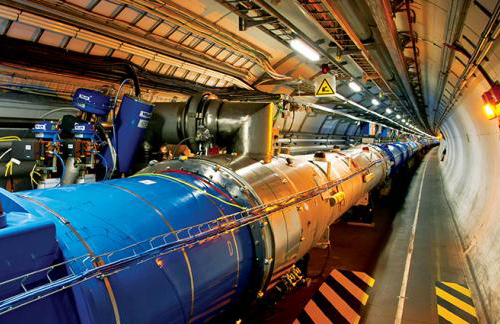80 iris readers now in use at world’s largest particle physics laboratory
Cranbury, N.J. – Jan. 11, 2016 – Iris ID, a leading provider of iris biometric technology, announced the completion of a second installation of its iris-recognition solution at CERN, a 21-country European research organization operating the world’s largest particle physics laboratory located outside Geneva, Switzerland.
The installation added Iris ID readers at 25 new biometrically controlled, security access points to the radiological area of CERN’s Proton Synchrotron (PS) accelerator complex. Another 55 Iris ID readers have been used since 2008 to access the Large Hadron Collider (LHC), CERN’s main underground particle collider.
Since 1954, CERN scientists have reported many major scientific achievements in the study of interactions between subatomic particles. The LHC allowed the recent discovery of the Higgs Boson, an elementary particle of crucial importance to particle physics theory. CERN is also credited with developing the World Wide Web in the late 1980s and early 1990s to enable sharing of information among its scientists.
Pierre Ninin, CERN’s head of safety systems engineering, said Iris ID readers are the vital layer in the identity authentication process at the LHC and accelerator complexes. He said about 10,000 scientists, technicians and long-term visitors are registered in the system’s database, with around 3,000 people accessing the two facilities on a typical day.
“The high value we place on the security of our people, our work and our facilities demands tight security.” Ninin said. “The Iris ID system has been up to the task at 100 meters below ground.”
He said extra precautions are designed to prevent “piggybacking,” a process in which one of more people enter along with an approved person. CERN staff members enter an airlock to access restricted areas. Inside, infrared beams note movements inconsistent with a single person. A floor pad sounds an alarm if it detects abnormal weight variations. Also, the compartment is small, making it difficult to fit a second person. The Iris ID reader takes less than one second to identify a person. If there is a match with a registered iris, a second door opens into the restricted area.
Employees are only allowed access to those areas required for them to complete their work. The Iris ID system maintains an audit trail allowing CERN administrators to check who has entered certain areas and when.
Ninin said additional Iris ID readers will be installed at another CERN accelerator currently being refurbished and due to open again in 2019.
Mohammed Murad, vice president, global sales and business development for Iris ID, said the company’s iris-recognition technology has been proven at major government, scientific and corporate facilities worldwide.
“Iris ID technology sets the standard for identity authorization, access control and time and attendance,” he said. “Our solution is designed to meet the demanding needs at CERN or any other organization requiring reliability, speed and accuracy.”
About CERN
CERN, the European Organization for Nuclear Research, is the world’s leading laboratory for particle physics. It has its headquarters in Geneva. At present, its member states are Austria, Belgium, Bulgaria, the Czech Republic, Denmark, Finland, France, Germany, Greece, Hungary, Israel, Italy, the Netherlands, Norway, Poland, Portugal, Slovakia, Spain, Sweden, Switzerland and the United Kingdom. Romania is a Candidate for Accession. Serbia is an Associate Member in the pre-stage to Membership. Pakistan and Turkey are Associate Members. India, Japan, the Russian Federation, the United States of America, the European Union, JINR and UNESCO have observer status.
About Iris ID Systems Inc.
Iris ID Systems Inc., has been active in iris recognition research, development and production since 1997. Today U.S.-based Iris ID Systems is a global player in the iris recognition business. IrisAccess® is the world’s leading deployed iris recognition platform and in thousands of locations authenticating the identities of millions and millions of persons. More people look to IrisAccess for iris-based authentication that to all other iris recognition products combined.

